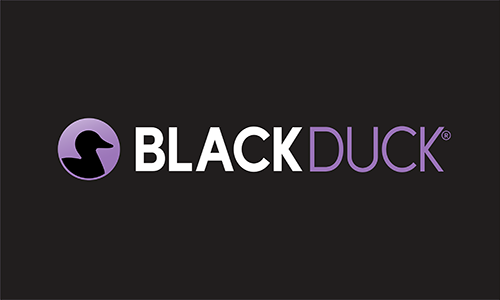| CARVIEW |
Contextualizing risk in the AI era
Sep 05, 2025 | 5 min read
AI-assisted development is accelerating software sprawl—and that has translated into increased complexity in managing application security (AppSec) at scale. In Black Duck’s recent “The State of Embedded Software and Quality and Safety” report, 89.3% of companies are already using AI coding assistants, and 21% of those organizations aren’t confident they can prevent flawed output from being incorporated in their code.
For security leaders, that means the scope of risk management has rapidly expanded. AI-assisted development greatly multiplies the number of potential source code issues that go unchecked in production-level software. It also means the underlying challenges with issue backlogs and process gaps are only going to compound in the AI era. This makes it even more urgent for organizations to streamline auditing, understand AppSec gaps, and scale processes for triage, remediation, and reporting.
Managing potential risks from AI-generated code
When we think of how AI coding tools could impact business resilience, history offers us a lesson from the early days of open-source code adoption. Ultimately, security teams could not fight the tide of developer productivity trends—they had to evolve their testing, tooling, and scope of impact.
In the AI era, evolving your risk management approach doesn’t just mean having the right tools in place. It’s about accomplishing these four outcomes.
- Gaining a perspective of portfolio health. You can accurately identify what has been tested, found, and fixed, and create a full, up-to-date inventory of applications, projects, and relevant changes.
- Understanding the impact of tools, teams, and processes. You have visibility into all your security issues, distinguishing newly detected ones from those that are ongoing and unresolved. You can also identify noncompliant applications and assess the overall effectiveness of your security program.
- Auditing software with precision. You can pinpoint critical policy violations and ensure that all applications meet your security standards. You can consistently evaluate your software to identify and address compliance issues.
- Achieving a high-fidelity, global view. You understand where your most vulnerable software lies across your organization, and you can streamline efforts and resources. Your risk assessments are standardized around a common taxonomy to prioritize your most critical security work.
Even mature security teams still struggle to achieve all these outcomes, as connecting all relevant data points within a larger, global view is difficult. As organizations grow, it’s important to get proactive about setting the right foundations for risk visibility.
The essential capabilities
When assessing a risk management solution, it’s important to look for whether it provides these capabilities.
- Standardizing risk categorization. Defining a clear, consistent metric for scoring and classifying risks helps teams determine which threats are high priority and which can be tolerated.
- Consolidating data points. Gathering all relevant information across testing, source code management (SCM), and issue-tracking tools in one place is crucial. Security solutions should have a strong level of connectivity with relevant tooling to keep the data current and regularly updated.
- Driving dynamic, tailored analysis. Providing clear mechanisms for filtering relevant data points is vital for organizations. It enables stakeholders with analysis relevant to their specific areas of interest such as compliance violations, team-based KPIs, or application types.
Best practices for risk visibility
A platform-based AppSec solution that includes testing, workflow management, and reporting can greatly simplify risk visibility for key stakeholders. While many AppSec platforms and tools offer some version of the capabilities mentioned, it’s important to look for the following use cases.
Customizable risk scoring
The solution should offer the ability to customize and standardize risk scoring, and the risk scoring methodology should account for the business criticality of an application. Many organizations fall into the trap of relying solely on proprietary risk scores provided by security tools. Taking a one-size-fits-all approach with this type of risk scoring often forgoes accounting for relevant context.
For example, when your scanner detects a vulnerability, the solution should be able to account for the potential impact if that vulnerability is exploited when considering the level of risk. Likewise, a risk score should be informed by whether an issue affects a mission-critical application or an internal tool with low business impact.
In the dynamic landscape of AI-driven software development, risk factors and their significance can swiftly evolve. Organizations require a risk scoring system that can keep pace with these changes. Customizable scoring not only facilitates continuous improvement, but also ensures that risk assessment remains relevant and accurate in the face of emerging threats and vulnerabilities.
Robust tool integrations
A vendor-agnostic approach to gathering data from third-party sources is key to ensuring an AppSec platform has up-to-date information. The ability to integrate with tools including source code management (SCM) systems and issue trackers is paramount when it comes to understanding your application inventory, security activities, and issue resolution.
By integrating security testing results with SCM data, organizations can automatically start testing new repositories and trigger tests on pull requests or merges. This seamless integration ensures that security is a continuous part of the development process. Additionally, continuous SCM monitoring within your AppSec platform is essential to maintaining visibility of your application inventory and keeping it current and accurate.
Integrating with issue-tracking tools enables you to create, manage, and track tickets, ensuring that vulnerabilities are addressed and fixes are deployed in a timely manner. Leveraging this data within your testing solutions helps teams keep track of when a vulnerability is being worked on, when it’s addressed, and when the fix is deployed. This bidirectional flow of information provides complete visibility and ensures that all stakeholders are informed throughout the process.
Detailed, tailored analysis and reporting
An AppSec platform shouldn’t just address broader-level KPIs such as the most vulnerable applications or top recurring problems. Reporting should also account for different stakeholders and their varying needs. A security leader may need to generate a high-level, organizational overview based on business unit or region, and restrict this to specified criteria. A developer may need a more granular, project-level view that provides detailed context on the issues found.
Key to providing tailored views is the ability to filter groups and attributes within the AppSec platform. This allows you to quickly answer specific questions from stakeholders, such as the number of critical vulnerabilities in Java applications or the compliance status of PCI-related apps. With this level of flexibility, you can accommodate a context-specific level of auditing.
Learn more about Black Duck
When evolving your risk management strategy, it can be hard to know where to start. There are many tools that can address some of these areas of risk visibility. But this can often translate to a piecemeal approach and additional complexity.
Black Duck Polaris™ Platform can address risk categorization, data consolidation, and reporting from one unified solution. It is an integrated, cloud-based AppSec platform optimized for the needs of development and DevSecOps teams. It enables developers to onboard and scan code in minutes, and it empowers security teams to track and manage AppSec testing activities and risks across thousands of applications. To see how Polaris can help, check out the Polaris YouTube channel for an in-depth look, and register for our three-part risk management webinar series to learn more.
Continue Reading
AI in DevSecOps: A critical crossroads for security and risk management
Oct 08, 2025 | 6 min read
Three steps to ensuring the reliability and security of your C++ projects
Jun 03, 2025 | 3 min read
How to secure AI-generated code with DevSecOps best practices
May 08, 2025 | 3 min read
Security automation and integration can smooth AppSec friction
Jan 23, 2025 | 6 min read
Overcome AST noise to find and fix software vulnerabilities
Jan 06, 2025 | 6 min read









